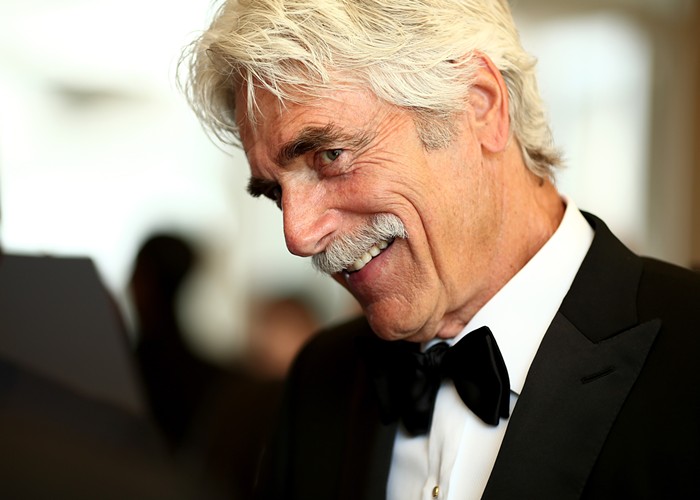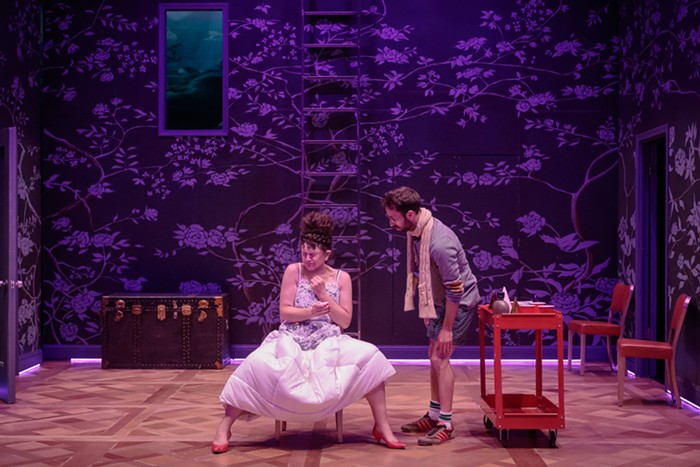I’m always ready to have my perceptions of reality recalibrated (which isn’t quite the same as admitting I’m wrong). For instance, I’ve been pretty mean about Walla Walla wines in the past, accusing them of being “big ’n boozy,” rattling around with all the delicacy of Trump’s foreign policy. But then a man whispered in my ear: “There’s more to it than that, come and see.” (The man was actually from Visit Walla Walla.) So I set out east, research and recommendations in hand, prepared to cross the state line in search of these mystical wines.
Walla Walla has a front row seat to the Blue Mountain foothills, which coax the light into mesmerizing hues that shift moment to moment. The town itself is generally undistinguished—not readily cute, but not unsightly either. Though the local state penitentiary is the largest employer, the wine industry’s footprint is apparent, with rows of tasting rooms downtown. There’s a burgeoning food scene these days, and it’s quietly establishing itself as an upmarket weekend destination.
I skipped the tasting rooms—the site of my discontent during my previous visit here. I headed a few miles out of town to Vital Wines, run by Ashley Trout, a 30-something who is already a veteran of the wine scene there. Vital is a nonprofit—all proceeds go to SOS, a free health clinic that caters to vineyard workers and their families. The fruit and services needed to make the wines are donated locally. Trout also runs March Cellars, a commercial venture, which she says helps fund Vital.
She spoke of the microclimates within Walla Walla and her worry of a monoculture when the “market decides what we do best”—meaning the intense simplicity of the big, rich, jammy reds would prevail.

For now, though, she is excited by the possibilities. I tried The Given ($25), a distinctive blend of Cabernet Sauvignon, Malbec, Cinsault, and Tinta Cao. It sang with flavors of black fruit, underpinned by flint and spice. It was over 14.2 percent, edging out of my comfort range, but still managed to be graceful while lacking the burning heat typical of high alcohol wines. This restraint was typical of the March range as well.
These were the kinds of wines I was looking for, but I wasn’t ready to finish my quest in the first act. I met Mike Martin, the archetype of the successful businessperson who established a second career in the wine world. Teaming up with Ali Mayfield, a winemaker from the region, they created the Walls, an urban winery that works with local grape varietals.
The 2014 Lip Stinger ($38), a white Rhone blend, came in at 14 percent (hefty for any white wine), but still managed a nimble freshness. It was evident it was a bigger wine, weighty in the mouth, though it didn’t continually kick at me as a reminder. My favorite was the Stanley Groovy ($38). The blend, apart from “Iberian varietals,” is secret, but it had the smell of orange zest and Christmas cookies, and the odd tension of restrained yet full flavors. It’s the kind of complexity you should invite into your life.

Was my mission becoming too easy? I journeyed next to Castillo de Feliciana, which sat off a lonely road amidst an Instagram-ready landscape. They also specialized in Iberian grapes (which makes sense, given the Peninsula’s equally hot climate). Their 66-acre vineyard is an ex-dentist’s winemaking hobby that’s grown into a multigenerational business. These wines were proportioned, despite handling alcohol contents breaking 15 percent. The 2013 Tempranillo Reserve was the best, offering dense, dark fruit, a gentle smokiness, and eager tannins, yet it could be the star of a summer backyard barbecue.
I’d given up on any serious obstacles inhibiting my progress—no vinous sirens or Cyclops on this Odyssey. I blew back into town to Gramercy Cellars, knowing what was coming. The bijou tasting room was bustling: The attraction was Greg Harrington’s considered Rhone and Bordeaux blends, which he’s been producing since 2005. These were wines that worked against heat and at times against expectations. The 2014 Third Man (Grenache, Syrah, Carignan and Mourvédre) was the embodiment of poise: A red with plenty of fruit and a meaty finish that was also remarkably lithe. It was a trick repeated throughout much of the tasting flight—and by now I wasn’t surprised.
Unlike Sir Galahad, who chose to ascend to heaven upon finding the Holy Grail, I came home. As a wine adventure, it was a rare thing—nearly all highs, and I had found exactly what I was looking for.












